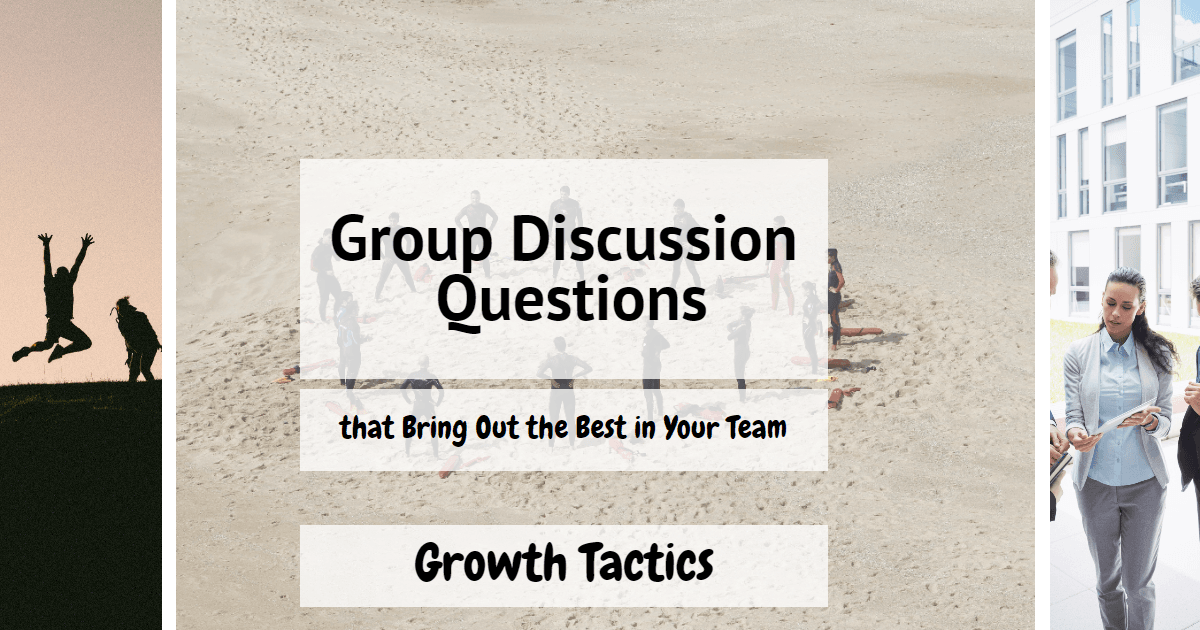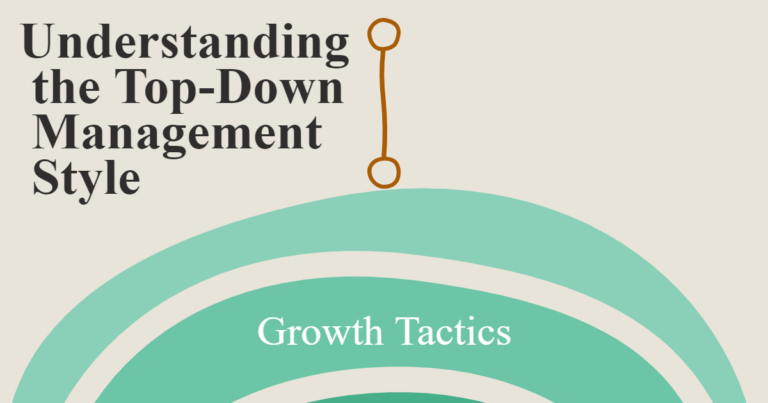In the journey of leadership and personal growth, fostering meaningful group discussions is key.
They are the bedrock of team cohesion and drive effective problem-solving.
When done right, these discussions can ignite creativity, enhance team performance, and encourage personal growth.
Today, I want to guide you through crafting purpose-driven group discussion questions that will help bring out the best in your team.
Jump To Section
Importance of Group Discussions
Group discussions go far beyond just exchanging ideas. They are a powerful tool for building trust, encouraging fresh perspectives, and solving problems collaboratively.
During my time in the Air Force, I saw firsthand how purposeful discussions could transform a group into a cohesive unit.
These sessions were pivotal in preparing for missions, honing leadership skills, and fostering an environment where every team member felt valued.
Crafting Purpose-Driven Questions
The foundation of an effective group discussion lies in the questions you ask.
Purpose-driven questions are designed to prompt reflection, elicit honest responses, and inspire action. Here’s how to create questions that truly resonate:
- Clarity and Focus: Ensure your questions are clear and focused. Ambiguity can lead to confusion and dilute the impact of the discussion.
- Encourage Reflection: Ask questions that encourage team members to reflect on their experiences, values, and individual goals.
- Inspire Action: Use questions that lead to actionable insights, motivating your team to implement what they’ve discussed.
Top Group Discussion Questions
For Enhancing Team Performance
- “What recent success are you most proud of, and why?”
- This question allows team members to share achievements, boosting morale and encouraging a culture of recognition and positivity.
- “What barriers are currently hindering our progress, and how can we overcome them?”
- This fosters a problem-solving mindset and promotes collective effort in identifying and addressing obstacles.
- “How can we better support each other to achieve our team goals?”
- Encourages a collective responsibility and highlights the importance of mutual support within the team.
- “What resources or tools do we need to improve our performance?”
- Prompts a discussion on necessary assets that can assist in achieving higher efficiency and productivity.
- “How can we leverage each team member’s unique strengths more effectively?”
- Focuses on recognizing and utilizing individual talents for the benefit of the whole team.
For Personal Growth
- “What skills do you want to develop further, and how can we support you in that journey?”
- Encourages personal development and shows your commitment to nurturing individual growth within the team.
- “How do you see your role evolving within the team, and what steps can you take to get there?”
- Aims to align personal aspirations with team goals, fostering a sense of purpose and direction.
- “What personal achievements outside of work are you proud of, and how do they contribute to your professional growth?”
- Helps team members reflect on how their broader life experiences contribute to their roles and personal development.
- “What challenges do you face in balancing work with personal life, and how can the team support you?”
- Encourages candid discussions about work-life balance and fosters a supportive team environment.
- “In what areas do you feel you need mentorship or guidance?”
- Opens a pathway for seeking help and professional growth through mentorship and guidance.
For Problem-Solving
- “What’s a significant challenge we’re facing, and what are some potential solutions?”
- Harnesses collective intelligence to tackle pressing issues, emphasizing that every team member’s input is valuable.
- “Reflect on a past problem we solved successfully. What did we do right, and how can we replicate that success?”
- Learning from past successes reinforces effective strategies and builds confidence in the team’s ability to overcome future obstacles.
- “What alternative approaches haven’t we considered for our current challenge, and why might they work?”
- Encourages creative and out-of-the-box thinking to explore diverse solutions.
- “How do external factors influence our current challenges, and what can we control?”
- Helps distinguish between controllable and uncontrollable elements, focusing effort on actionable solutions.
- “How can we improve our communication to better address and solve problems?”
- Emphasizes the role of effective communication in problem-solving and prompts ideas for enhancement.
Implementing These Questions in Team Meetings
Integrating these vital discussion questions into your team meetings doesn’t have to be a daunting task. It merely requires intentional planning and a commitment to fostering an environment where everyone’s voice is heard and valued.
Here’s a methodical approach to get you started:
Step 1: Dedicated Time Allocation
First and foremost, carve out dedicated time in your meeting agenda specifically for these discussions.
This isn’t about squeezing them into an already packed schedule, but rather, making them a priority.
When you allocate time for meaningful conversation, you signal to your team that their input is invaluable.
This simple act underscores the importance of leadership and personal growth.
Step 2: Create a Safe Space
Next, focus on cultivating a safe and inclusive environment. Reflecting on my experiences in the Air Force, I can attest that respectful dialogue can transform team dynamics.
Begin each session by reminding your team that this is a space for open, honest, and respectful communication.
Encourage them to share their thoughts without fear of judgment or repercussion. It’s crucial to listen actively.
Acknowledge contributions and show genuine appreciation for each person’s perspective.
Step 3: Inclusive Participation
Ensure that everyone has an opportunity to participate.
One effective strategy is to go around the table and invite each member to share their thoughts on the posed question.
This method not only gives everyone a chance to speak but also fosters a sense of inclusivity and camaraderie.
Balance the need for authority with empathy, drawing insights from both leadership principles and personal experiences.
Step 4: Personal Relevance and Purpose
Remind your team of the purpose behind these discussions.
Each question is designed to provoke thought, inspire personal reflection, and drive purpose-driven action.
Encourage them to connect these discussions to their own experiences and aspirations.
This alignment helps them see the value in these conversations and motivates them to engage meaningfully.
By fostering a culture of inclusive dialogue, you’re not just enhancing team cohesion; you’re paving the way for individuals to find their own solutions, driven by a sense of purpose and belonging.
That’s the hallmark of true leadership.
Measuring the Impact
To truly gauge the effectiveness of incorporating these group discussion questions, you must assess both the tangible and intangible shifts in your team’s dynamics and outcomes.
Leadership, after all, isn’t about hope; it’s about results.
Here’s a strategic yet empathetic approach to measuring impact.
Step 1: Observe Engagement Levels
Start by paying keen attention to the engagement levels during meetings.
Are your team members participating more actively?
Are the discussions richer and more nuanced?
From my experience in the Air Force, I know that an engaged team isn’t just more productive; they’re more cohesive.
Look for signs of increased enthusiasm, deeper involvement, and more thoughtful contributions.
Engagement isn’t just about who talks the most; it’s about the quality and depth of interactions.
Step 2: Monitor Team Performance
Next, focus on tangible outcomes.
Is there a visible improvement in team performance?
Examine metrics such as project completion rates, quality of work, and innovation levels.
Compare these against historical data to identify any positive trends.
Leadership is about driving results, and your discussions should translate into enhanced performance and productivity.
Step 3: Collect and Analyze Feedback
Feedback is invaluable in this process.
Create a feedback loop where team members can anonymously share their thoughts on these discussions.
Ask direct questions about the relevance and impact of the conversations.
What did they find useful?
What could be improved?
In the Air Force, after-action reports are fundamental; you conduct them to understand what went right and what didn’t.
Use a similar approach here.
Analyze the feedback objectively to refine your strategy.
Step 4: Assess Team Cohesion and Morale
The often overlooked aspect of leadership is morale.
High engagement and performance should naturally lead to better team morale and cohesion.
Watch for signs of strengthened relationships and unified purpose.
Are team members supporting each other more?
Is there a palpable trust between them?
Improved team cohesion is a leading indicator of sustainable success and a healthy work environment.
Step 5: Adapt and Evolve
Finally, remain flexible and open to continuous improvement.
Leadership and growth are dynamic; what works today might need tweaking tomorrow.
Regularly revisit your approach based on feedback and performance metrics.
Ensure that your discussion topics evolve to stay relevant to the current challenges and opportunities your team faces.
This iterative process underscores the value of agility, a principle that was often stressed in the Air Force, adapt and overcome.
Conclusion
Purposeful group discussions can be a transformative tool in any team’s arsenal.
By asking the right questions, you empower your team to reflect, grow, and solve problems collectively.
Remember, effective leadership is about creating opportunities for your team to shine.
So, start integrating these questions into your discussions and watch as your team reaches new heights.
By shaping your group discussions with intention and empathy, you harness the full potential of your team, fostering an environment where each member can thrive and contribute meaningfully.








